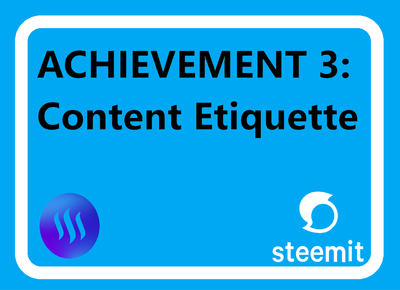Achievement 3 by @mriaz333 task || Content Etiquette
What is plagiarism
Plagiarism is presenting someone else’s work or ideas as your own, with or without their consent, by incorporating it into your work without full acknowledgement. All published and unpublished material, whether in manuscript, printed or electronic form, is covered under this definition. Plagiarism may be intentional or reckless, or unintentional. Under the regulations for examinations, intentional or reckless plagiarism is a disciplinary offence.
source
Types of plagiarism
Direct plagiarism
Copying and pasting a copy, also known as direct copy, means copying a passage from a source without quoting it. If you want to use someone else's exact words, you need to quote the source and quote them correctly.
Mosaic plagiarism
Mosaic plagiarism way using diverse terms, passages, and thoughts from specific assets to create a kind of "mosaic" or "patchwork" of other researchers' work, without right quotations. at the same time as the result is a very new piece of text, the words and ideas aren't new
Self plagiarism
Self plagiarism means reusing parts of your previous work (e.g. moving the same paper to a different class or resizing a database) without acknowledging this. Plagiarism is a problem because your students expect the work to be new and original.
Global plagiarism
Global plagiarism means bringing in all the work written by someone else. That includes having a friend write your paper or buy an essay on an online essay machine. This is considered the worst form of plagiarism, because you are deliberately lying about writing this work.
Why does plagiarism matter?
Mocking is a form of academic infidelity. Whether you are a student submitting a paper to a classmate or a researcher who submits a journal, it is expected that the work you post will be yours.
If you express an opinion without referring to the source, or paste the text without quoting it properly, you are taking credit for someone else's work. This is true even if you did not intend to mislead your readers.
That doesn’t mean you can’t apply the ideas of other researchers — building on the work of others is an important part of academic writing. But it is important to clearly distinguish your words and ideas from those of your sources.
As a student, cheating can result in failure in your studies or qualifications.
As a professional, copying can put your work and your reputation in jeopardy, and you can be legally prosecuted for possession and copyright infringement.
The complexity of the results depends on the type of cheating and context - a first-year student who makes accidental writing errors is more likely to be treated than a graduate student who deliberately steals someone’s work. But in all cases, cheating can be detrimental to your academic achievement.
How to avoid plagiarism
1: Keep a record of the sources you consult during your investigation.
2: Put words or quotes in your sources (then enter your own ideas).
3: Praise the real author in the in-list and index list.
4: Use a plagiarism checker before shipping

Write about how to remove the Plagiarism
Ma'am @vvarishayy
Done, kindly check it
Your first a few like are Plagiarised, cite it or provide the source. Although I'm verifying your post because Plagiarism is below 20% but plz be careful